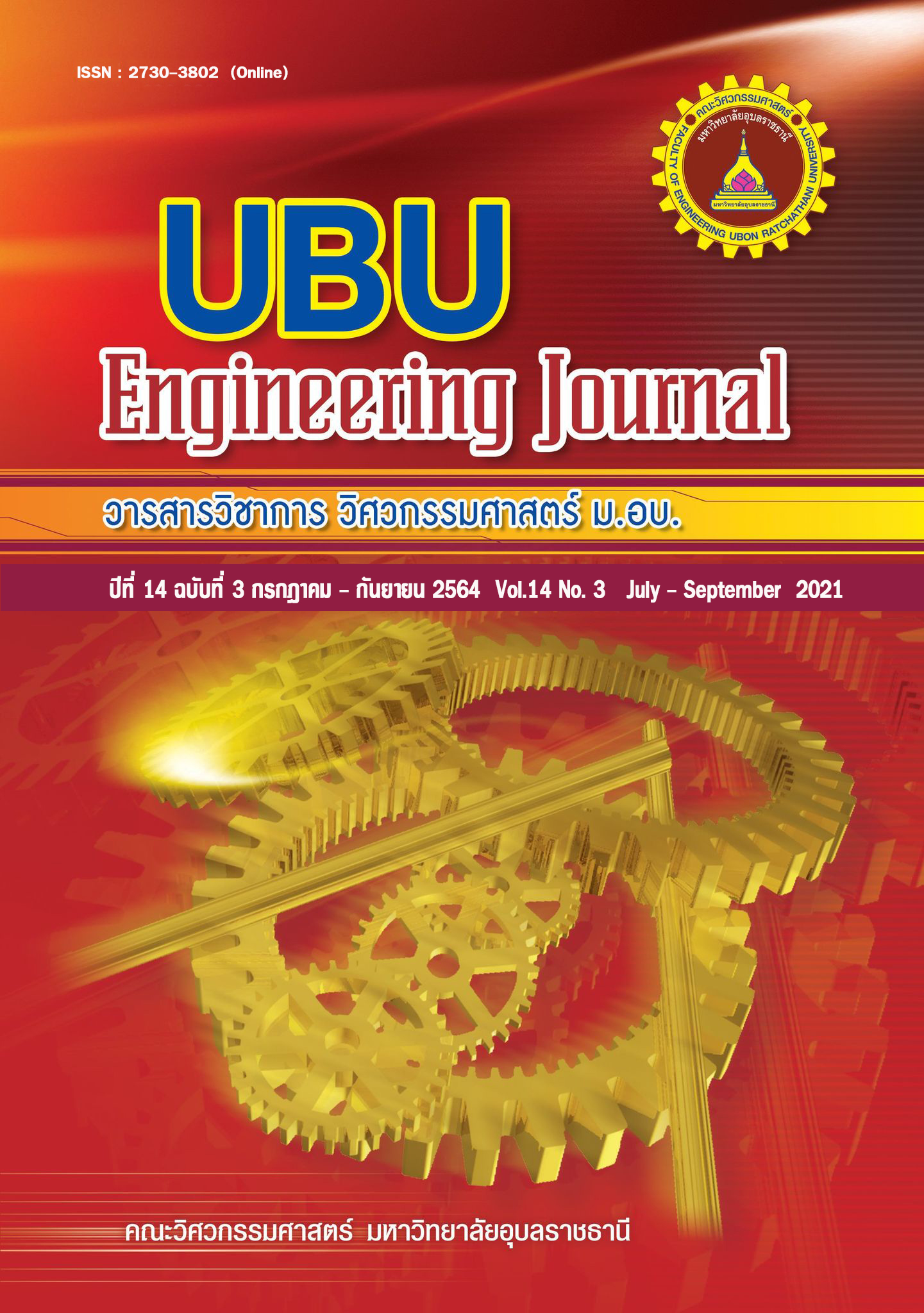Development of a mathematical model for cleft lip and cleft palate patient treatment scheduling
Main Article Content
Abstract
Nowadays, many hospitals usually face the treatment scheduling problem due to increasing the number of patients, resource limitations, and multiple procedures in the system. Also, the cleft lip and cleft palate patient treatment in Thailand is facing with scheduling problem, owing to the complicated treatment and long treatment procedure. According to this situation in Thai hospitals, this paper aims to propose a mixed integer linear programming model for cleft lip and cleft palate treatment scheduling problem, in which the patients are assigned to be treated at an appropriate time under the limitations of the procedure and the hospital. Firstly, the proposed mathematical model was compared with the previous model, in which the results found that the proposed model can be superior to the previous model in both solution time and the number of variables. Then, the proposed mathematical model was developed based on several conditions such as capacity limitations, age limitations, multiple hospitals, the doctor conditions, and multiple treatment periods. Moreover, the developed mathematical model determined three objective functions that compose of the shortest path between the patient’s residence and the hospital, the highest preference score of patients to hospitals, and the minimization of the makespan. Three objective functions were formulated as the single objective function using the normalization and weight-sum method. The developed model was verified and validated by a small size generated data using the exact solver from Lingo 14.0. Finally, the developed model was applied to the small size real world case. The result found that the proposed mathematical model can schedule the treatment plan appropriately under the collected conditions and procedures with a short time. This paper will be of great significance in helping doctors or staff consider the cleft lip and cleft palate patient treatment scheduling in Thai hospitals as well.
Article Details
References
[2] Conforti D, Guerriero F, Guido R. Optimization models for radiotherapy patient scheduling. A Quarterly Journal of Operations Research. 2007;6(3):263-78.
[3] Burke EK, Leite-Rocha P, Petrovic SJapa. An integer linear programming model for the radiotherapy treatment scheduling problem. 2011.
[4] Lin YK, Chou YY. A hybrid genetic algorithm for operating room scheduling. Health care management science. 2020 Jun;23(2):249-63.
[5] Bastos LSL, Marchesi JF, Hamacher S, Fleck JL. A mixed integer programming approach to the patient admission scheduling problem. European Journal of Operational Research. 2019;273(3):831-40.
[6] Ceschia S, Schaerf A. Local search and lower bounds for the patient admission scheduling problem. Computers & Operations Research. 2011;38(10):1452-63.
[7] Demeester P, Souffriau W, De CP, Berghe GV. A hybrid tabu search algorithm for automatically assigning patients to beds. Artificial Intelligence in Medicine. 2010 Jan 1;48(1):61-70.
[8] Zhao L, Chien CF, Gen M. A bi-objective genetic algorithm for intelligent rehabilitation scheduling considering therapy precedence constraints. Journal of Intelligent Manufacturing. 2018 Jun;29(5):973-88.
[9] Kamran MA, Karimi B, Dellaert N, Demeulemeester E. Adaptive operating rooms planning and scheduling: A rolling horizon approach. Operations Research for Health Care. 2019;22:100200.
[10] Arisha A, Young P, El Baradie M. Job shop scheduling problem: an overview. 2001.
[11] Alizadeh R, Rezaeian J, Abedi M, Chiong R. A modified genetic algorithm for non-emergency outpatient appointment scheduling with highly demanded medical services considering patient priorities. Computers & Industrial Engineering. 2020;139.
[12] Bolaji ALa, Bamigbola AF, Shola PB. Late acceptance hill climbing algorithm for solving patient admission scheduling problem. Knowledge-Based Systems. 2018;145:197-206.
[13] Boonmee C, Kasemset C. การประยุกต์ใช้เทคนิคการหาค่าดีที่สุดสาหรับการกระจายสินค้า กรณีศึกษาโรงงานผลิตผลไม้กระป๋อง. วารสารไทยการวิจัยดำเนินงาน. 2014;2:2-10.
[14] Priddy KL, Keller PE. Artificial Neural Networks: An Introduction: SPIE Press; 2005.
